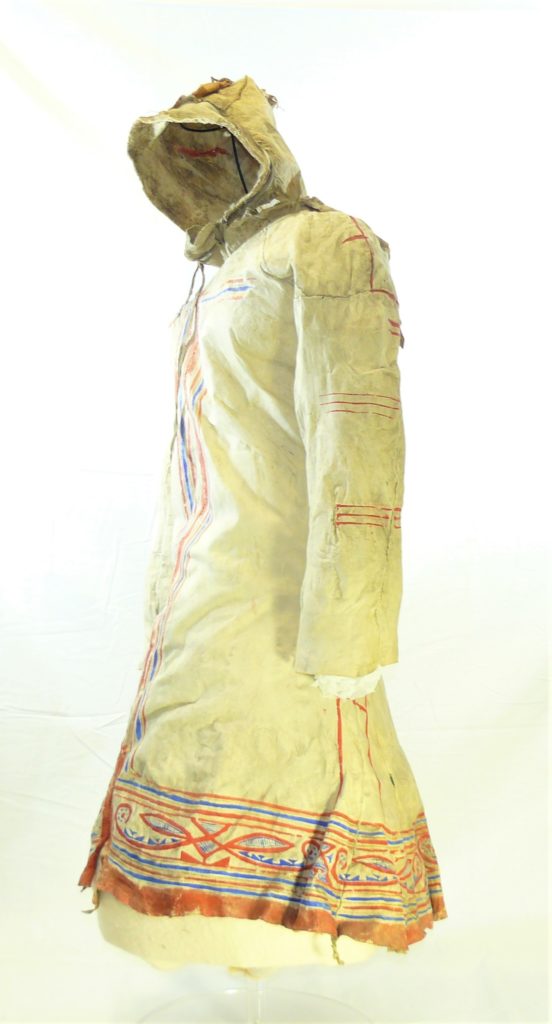For many of the First Nations living in the north of Canada, caribou was an important food source. These large creatures, which are very similar to reindeer in northern Europe, were hunted by many different peoples for their meat and their skins. One nation was the Innu, who lived on the Quebec-Labrador peninsula in north east Canada.
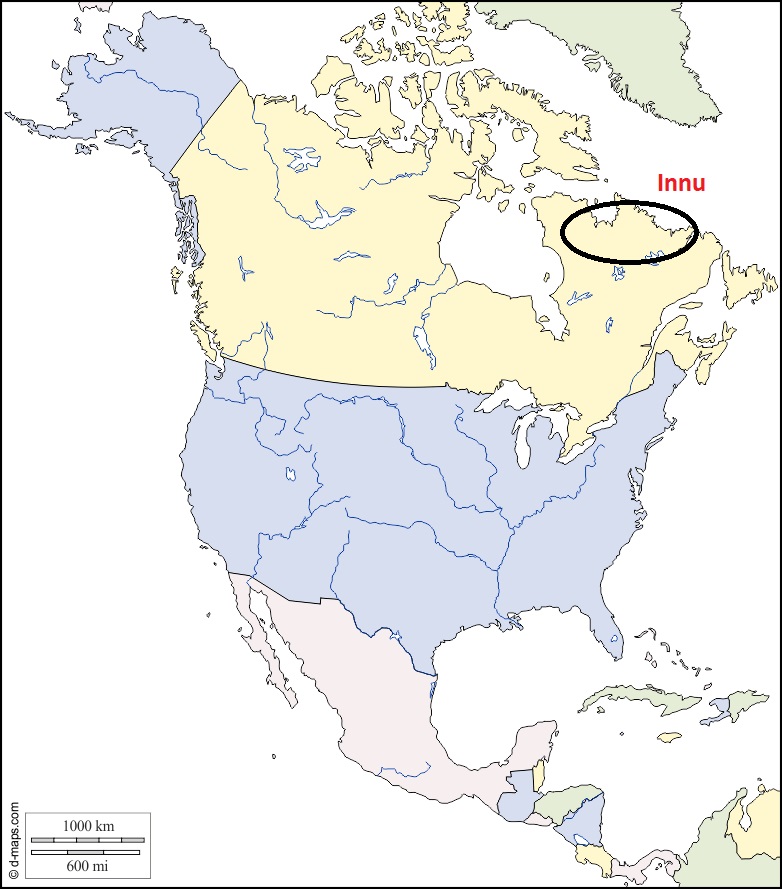
Previously, the Innu were known as “Naskapi”. This was the name used by European colonisers and is a derogatory term meaning “uncivilised people”. The Innu prefer their own name, which means “human being”.

When hunting caribou , the Innu would wear beautifully decorated coats made out of caribou skins, and we have one of these in the GNM: Hancock collection.
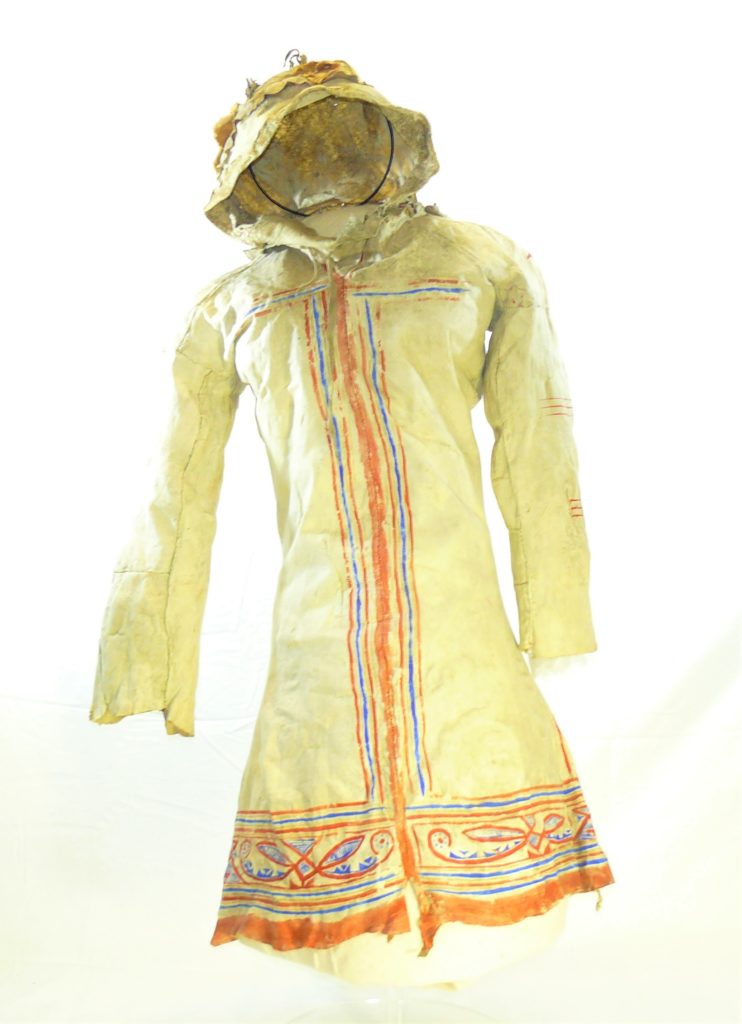
NEWHM : G112 Front 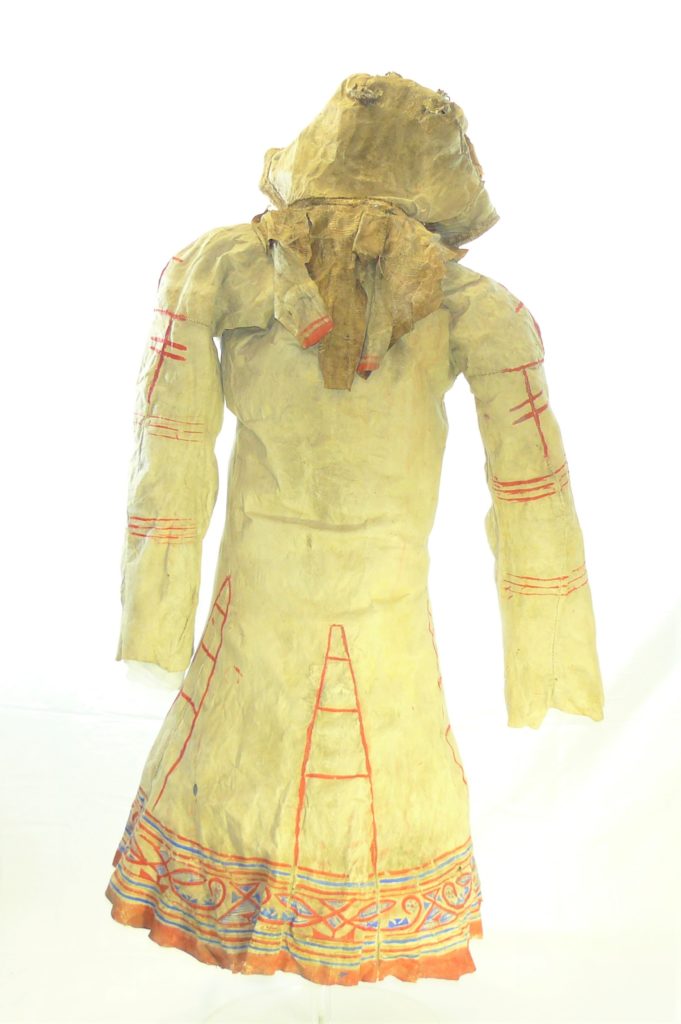
NEWHM : G112 Back
An object as spectacular as this deserves attention, and so I’ve been researching the coat, its decoration, and what it all means to the Innu.
Many native groups across North America, including the Innu, recognised that there was a bond between animals and humans. They believed that every animal had a spirit and their favour had to be sought if it was to be hunted successfully. To please the spirits of the animals they hunted, clothing was often decorated with a high level of artistry. Nowhere is this seen more effectively than in the caribou skin coats of the Innu, where the painted coat became the physical evidence of the relationship between the Innu and the caribou.
Before a hunt, careful preparation was required which involved the making of the hunting coat. When asleep, a man would receive instructions through his dreams about the decorations needed for the coat. He would pass these messages onto his wife. Highly skilled artists and seamstresses, the Innu women would then produce an item of clothing that was not only functional but a major artistic creation.
Let’s get a more detailed look at our coat to see what this involved.
It was thought that dreams would reveal particular themes and motifs that would give the hunter power. Simple instructions about these designs would be passed onto his wife who would then use these themes and enrich them.
In our coat we can see that the most significant motif used is the double curve.
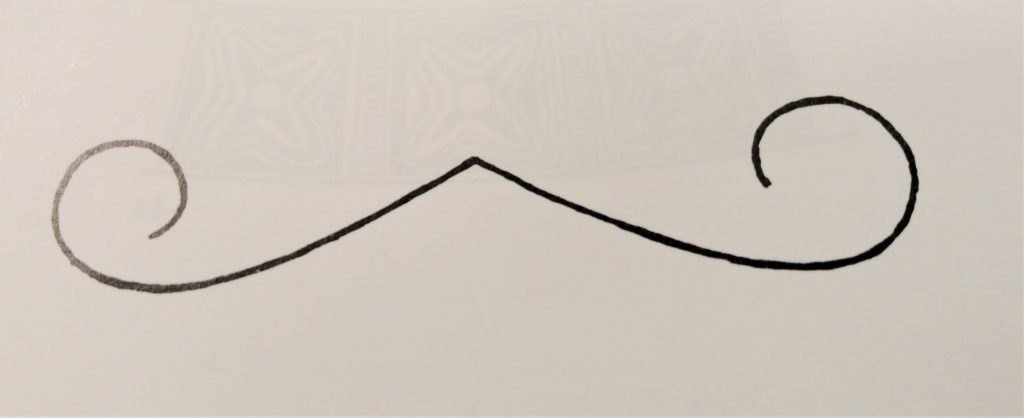
The Double Curve motif
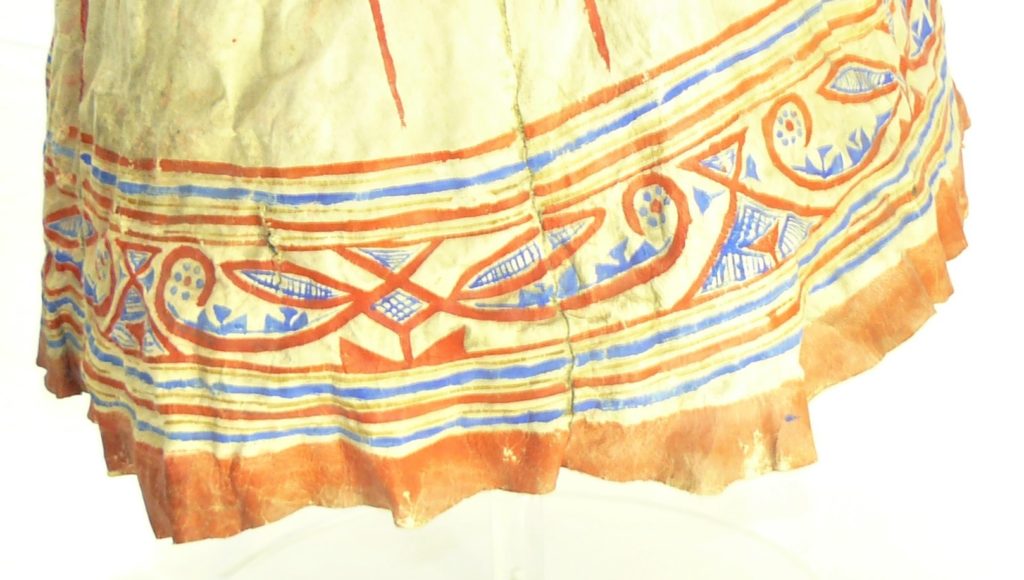
Border at base of coat 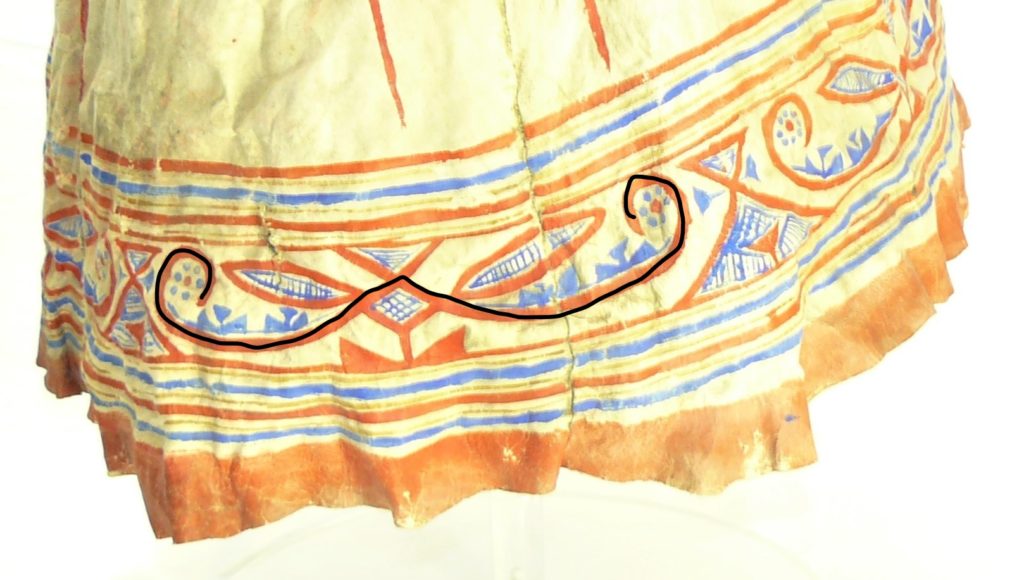
Double curve motif highlighted
Many Innu coats feature this motif, but it’s all of the added details that makes the coat unique. Pairs of leaves can be seen supported by the double curve. For the peoples who live through the northern winters, the first signs of new leaves in the spring with their promise of renewal and life is a great joy. It seems completely natural for this joy to be reflected in designs for such an important garment. Plant designs can also be seen in the shaped triangles along the curves.
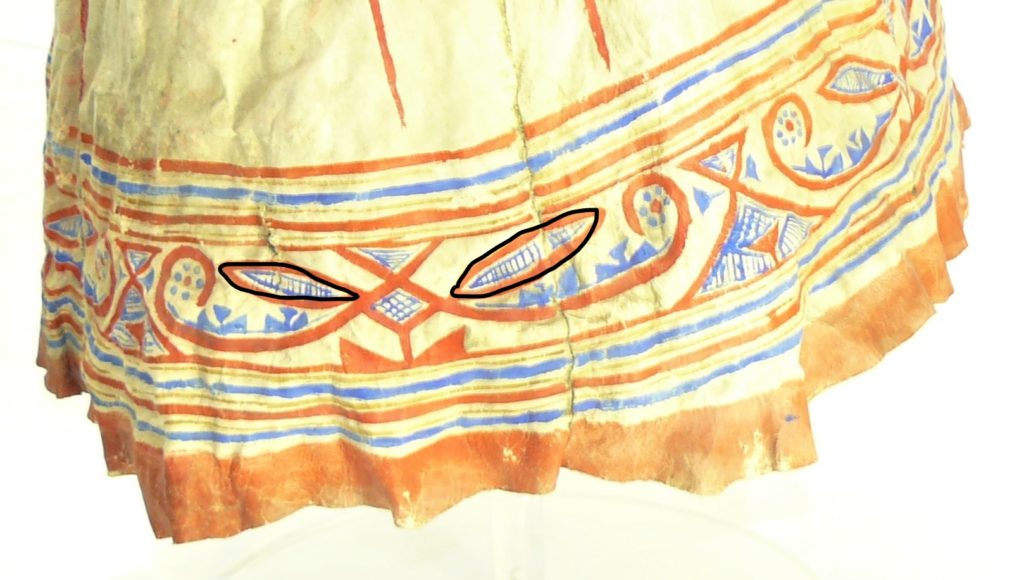
Leaf motif highlighted 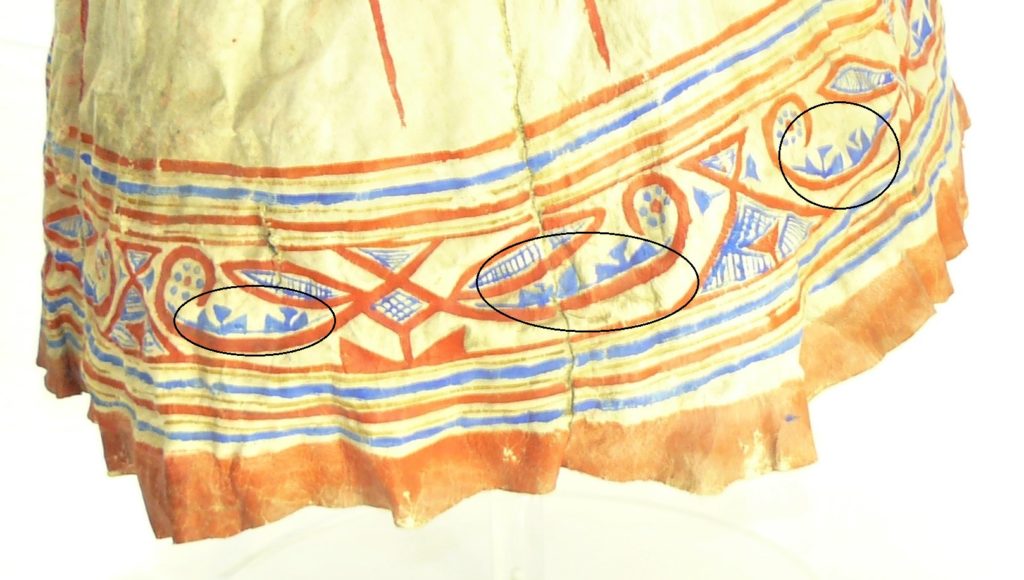
Plant motif highlighted
The most important part of the coat was actually the back of it. Here we can see the “back gusset” of the garment.
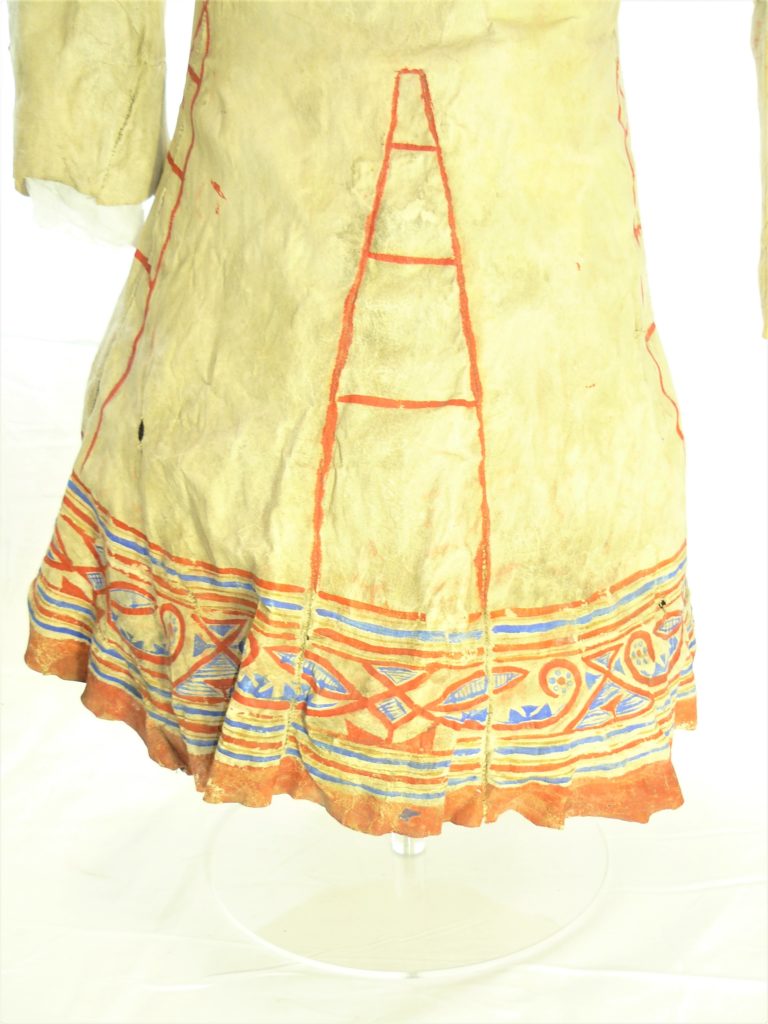
At the base of the coat, Innu women would cut out a triangle of skin and insert another piece, sometimes larger than the original to make the coat flare out at the bottom. This replacement was done not to make it more visually pleasing, but for highly ritualistic reasons. The shape of the gusset was triangular, similar to a mountain peak. To the Innu, this represented the Magical Mountain where the Lord of the Caribou lived. They believed this being sent out the spirits of the caribou to the hunter. If the Lord of the Caribou was respected and honoured, then the hunter would have success. It was this that was the symbolic centre of the coat’s power.
While beautiful to look at, it’s the hidden meanings behind this coat that give pause for thought.
It physically represents the relationship between the Innu’s ordinary world and the dream world, and it highlights the importance of communication and trust between an Innu hunter and his wife who creates the coat for him. And lastly, like so many examples of native North American art it embodies the relationship between people, the land, the animals they interact with, and the spirit world.
This research is made possible through a Headley Fellowship with Art Fund


